-
EXECUTIVE SUMMARY
-
Market Overview
-
Key Findings
-
Market Segmentation
-
Competitive Landscape
-
Challenges and Opportunities
-
Future Outlook
-
MARKET INTRODUCTION
-
Definition
-
Scope of the study
- Research Objective
- Assumption
- Limitations
-
RESEARCH METHODOLOGY
-
Overview
-
Data Mining
-
Secondary Research
-
Primary Research
- Primary Interviews and Information Gathering Process
- Breakdown of Primary Respondents
-
Forecasting Model
-
Market Size Estimation
- Bottom-Up Approach
- Top-Down Approach
-
Data Triangulation
-
Validation
-
MARKET DYNAMICS
-
Overview
-
Drivers
-
Restraints
-
Opportunities
-
MARKET FACTOR ANALYSIS
-
Value chain Analysis
-
Porter's Five Forces Analysis
- Bargaining Power of Suppliers
- Bargaining Power of Buyers
- Threat of New Entrants
- Threat of Substitutes
- Intensity of Rivalry
-
COVID-19 Impact Analysis
- Market Impact Analysis
- Regional Impact
- Opportunity and Threat Analysis
-
LIQUID BIOPSY MARKET, BY APPLICATION (USD BILLION)
-
Cancer Diagnosis
-
Treatment Monitoring
-
Recurrence Monitoring
-
Clinical Trials
-
Research Applications
-
LIQUID BIOPSY MARKET, BY SAMPLE TYPE (USD BILLION)
-
Blood
-
Urine
-
Saliva
-
Pleural Fluid
-
Cerebrospinal Fluid
-
LIQUID BIOPSY MARKET, BY TECHNOLOGY (USD BILLION)
-
Next Generation Sequencing
-
Digital PCR
-
Microfluidics
-
Exosome Isolation
-
Circulating Tumor Cells
-
LIQUID BIOPSY MARKET, BY END USE (USD BILLION)
-
Hospitals
-
Diagnostic Laboratories
-
Research Institutes
-
Pharmaceutical Companies
-
LIQUID BIOPSY MARKET, BY REGIONAL (USD BILLION)
-
North America
- US
- Canada
-
Europe
- Germany
- UK
- France
- Russia
- Italy
- Spain
- Rest of Europe
-
APAC
- China
- India
- Japan
- South Korea
- Malaysia
- Thailand
- Indonesia
- Rest of APAC
-
South America
- Brazil
- Mexico
- Argentina
- Rest of South America
-
MEA
- GCC Countries
- South Africa
- Rest of MEA
-
COMPETITIVE LANDSCAPE
-
Overview
-
Competitive Analysis
-
Market share Analysis
-
Major Growth Strategy in the Liquid Biopsy Market
-
Competitive Benchmarking
-
Leading Players in Terms of Number of Developments in the Liquid Biopsy Market
-
Key developments and growth strategies
- New Product Launch/Service Deployment
- Merger & Acquisitions
- Joint Ventures
-
Major Players Financial Matrix
- Sales and Operating Income
- Major Players R&D Expenditure. 2023
-
COMPANY PROFILES
-
GRAIL
- Financial Overview
- Products Offered
- Key Developments
- SWOT Analysis
- Key Strategies
-
Natera
- Financial Overview
- Products Offered
- Key Developments
- SWOT Analysis
- Key Strategies
-
Foundation Medicine
- Financial Overview
- Products Offered
- Key Developments
- SWOT Analysis
- Key Strategies
-
Exact Sciences
- Financial Overview
- Products Offered
- Key Developments
- SWOT Analysis
- Key Strategies
-
Thermo Fisher Scientific
- Financial Overview
- Products Offered
- Key Developments
- SWOT Analysis
- Key Strategies
-
Avantor
- Financial Overview
- Products Offered
- Key Developments
- SWOT Analysis
- Key Strategies
-
ArcherDX
- Financial Overview
- Products Offered
- Key Developments
- SWOT Analysis
- Key Strategies
-
Roche
- Financial Overview
- Products Offered
- Key Developments
- SWOT Analysis
- Key Strategies
-
Medpace
- Financial Overview
- Products Offered
- Key Developments
- SWOT Analysis
- Key Strategies
-
Illumina
- Financial Overview
- Products Offered
- Key Developments
- SWOT Analysis
- Key Strategies
-
Guardant Health
- Financial Overview
- Products Offered
- Key Developments
- SWOT Analysis
- Key Strategies
-
Qiagen
- Financial Overview
- Products Offered
- Key Developments
- SWOT Analysis
- Key Strategies
-
Freenome
- Financial Overview
- Products Offered
- Key Developments
- SWOT Analysis
- Key Strategies
-
Biocept
- Financial Overview
- Products Offered
- Key Developments
- SWOT Analysis
- Key Strategies
-
APPENDIX
-
References
-
Related Reports
-
LIST OF TABLES
-
LIST OF ASSUMPTIONS
-
NORTH AMERICA LIQUID BIOPSY MARKET SIZE ESTIMATES & FORECAST, BY APPLICATION, 2019-2035 (USD BILLIONS)
-
NORTH AMERICA LIQUID BIOPSY MARKET SIZE ESTIMATES & FORECAST, BY SAMPLE TYPE, 2019-2035 (USD BILLIONS)
-
NORTH AMERICA LIQUID BIOPSY MARKET SIZE ESTIMATES & FORECAST, BY TECHNOLOGY, 2019-2035 (USD BILLIONS)
-
NORTH AMERICA LIQUID BIOPSY MARKET SIZE ESTIMATES & FORECAST, BY END USE, 2019-2035 (USD BILLIONS)
-
NORTH AMERICA LIQUID BIOPSY MARKET SIZE ESTIMATES & FORECAST, BY REGIONAL, 2019-2035 (USD BILLIONS)
-
US LIQUID BIOPSY MARKET SIZE ESTIMATES & FORECAST, BY APPLICATION, 2019-2035 (USD BILLIONS)
-
US LIQUID BIOPSY MARKET SIZE ESTIMATES & FORECAST, BY SAMPLE TYPE, 2019-2035 (USD BILLIONS)
-
US LIQUID BIOPSY MARKET SIZE ESTIMATES & FORECAST, BY TECHNOLOGY, 2019-2035 (USD BILLIONS)
-
US LIQUID BIOPSY MARKET SIZE ESTIMATES & FORECAST, BY END USE, 2019-2035 (USD BILLIONS)
-
US LIQUID BIOPSY MARKET SIZE ESTIMATES & FORECAST, BY REGIONAL, 2019-2035 (USD BILLIONS)
-
CANADA LIQUID BIOPSY MARKET SIZE ESTIMATES & FORECAST, BY APPLICATION, 2019-2035 (USD BILLIONS)
-
CANADA LIQUID BIOPSY MARKET SIZE ESTIMATES & FORECAST, BY SAMPLE TYPE, 2019-2035 (USD BILLIONS)
-
CANADA LIQUID BIOPSY MARKET SIZE ESTIMATES & FORECAST, BY TECHNOLOGY, 2019-2035 (USD BILLIONS)
-
CANADA LIQUID BIOPSY MARKET SIZE ESTIMATES & FORECAST, BY END USE, 2019-2035 (USD BILLIONS)
-
CANADA LIQUID BIOPSY MARKET SIZE ESTIMATES & FORECAST, BY REGIONAL, 2019-2035 (USD BILLIONS)
-
EUROPE LIQUID BIOPSY MARKET SIZE ESTIMATES & FORECAST, BY APPLICATION, 2019-2035 (USD BILLIONS)
-
EUROPE LIQUID BIOPSY MARKET SIZE ESTIMATES & FORECAST, BY SAMPLE TYPE, 2019-2035 (USD BILLIONS)
-
EUROPE LIQUID BIOPSY MARKET SIZE ESTIMATES & FORECAST, BY TECHNOLOGY, 2019-2035 (USD BILLIONS)
-
EUROPE LIQUID BIOPSY MARKET SIZE ESTIMATES & FORECAST, BY END USE, 2019-2035 (USD BILLIONS)
-
EUROPE LIQUID BIOPSY MARKET SIZE ESTIMATES & FORECAST, BY REGIONAL, 2019-2035 (USD BILLIONS)
-
GERMANY LIQUID BIOPSY MARKET SIZE ESTIMATES & FORECAST, BY APPLICATION, 2019-2035 (USD BILLIONS)
-
GERMANY LIQUID BIOPSY MARKET SIZE ESTIMATES & FORECAST, BY SAMPLE TYPE, 2019-2035 (USD BILLIONS)
-
GERMANY LIQUID BIOPSY MARKET SIZE ESTIMATES & FORECAST, BY TECHNOLOGY, 2019-2035 (USD BILLIONS)
-
GERMANY LIQUID BIOPSY MARKET SIZE ESTIMATES & FORECAST, BY END USE, 2019-2035 (USD BILLIONS)
-
GERMANY LIQUID BIOPSY MARKET SIZE ESTIMATES & FORECAST, BY REGIONAL, 2019-2035 (USD BILLIONS)
-
UK LIQUID BIOPSY MARKET SIZE ESTIMATES & FORECAST, BY APPLICATION, 2019-2035 (USD BILLIONS)
-
UK LIQUID BIOPSY MARKET SIZE ESTIMATES & FORECAST, BY SAMPLE TYPE, 2019-2035 (USD BILLIONS)
-
UK LIQUID BIOPSY MARKET SIZE ESTIMATES & FORECAST, BY TECHNOLOGY, 2019-2035 (USD BILLIONS)
-
UK LIQUID BIOPSY MARKET SIZE ESTIMATES & FORECAST, BY END USE, 2019-2035 (USD BILLIONS)
-
UK LIQUID BIOPSY MARKET SIZE ESTIMATES & FORECAST, BY REGIONAL, 2019-2035 (USD BILLIONS)
-
FRANCE LIQUID BIOPSY MARKET SIZE ESTIMATES & FORECAST, BY APPLICATION, 2019-2035 (USD BILLIONS)
-
FRANCE LIQUID BIOPSY MARKET SIZE ESTIMATES & FORECAST, BY SAMPLE TYPE, 2019-2035 (USD BILLIONS)
-
FRANCE LIQUID BIOPSY MARKET SIZE ESTIMATES & FORECAST, BY TECHNOLOGY, 2019-2035 (USD BILLIONS)
-
FRANCE LIQUID BIOPSY MARKET SIZE ESTIMATES & FORECAST, BY END USE, 2019-2035 (USD BILLIONS)
-
FRANCE LIQUID BIOPSY MARKET SIZE ESTIMATES & FORECAST, BY REGIONAL, 2019-2035 (USD BILLIONS)
-
RUSSIA LIQUID BIOPSY MARKET SIZE ESTIMATES & FORECAST, BY APPLICATION, 2019-2035 (USD BILLIONS)
-
RUSSIA LIQUID BIOPSY MARKET SIZE ESTIMATES & FORECAST, BY SAMPLE TYPE, 2019-2035 (USD BILLIONS)
-
RUSSIA LIQUID BIOPSY MARKET SIZE ESTIMATES & FORECAST, BY TECHNOLOGY, 2019-2035 (USD BILLIONS)
-
RUSSIA LIQUID BIOPSY MARKET SIZE ESTIMATES & FORECAST, BY END USE, 2019-2035 (USD BILLIONS)
-
RUSSIA LIQUID BIOPSY MARKET SIZE ESTIMATES & FORECAST, BY REGIONAL, 2019-2035 (USD BILLIONS)
-
ITALY LIQUID BIOPSY MARKET SIZE ESTIMATES & FORECAST, BY APPLICATION, 2019-2035 (USD BILLIONS)
-
ITALY LIQUID BIOPSY MARKET SIZE ESTIMATES & FORECAST, BY SAMPLE TYPE, 2019-2035 (USD BILLIONS)
-
ITALY LIQUID BIOPSY MARKET SIZE ESTIMATES & FORECAST, BY TECHNOLOGY, 2019-2035 (USD BILLIONS)
-
ITALY LIQUID BIOPSY MARKET SIZE ESTIMATES & FORECAST, BY END USE, 2019-2035 (USD BILLIONS)
-
ITALY LIQUID BIOPSY MARKET SIZE ESTIMATES & FORECAST, BY REGIONAL, 2019-2035 (USD BILLIONS)
-
SPAIN LIQUID BIOPSY MARKET SIZE ESTIMATES & FORECAST, BY APPLICATION, 2019-2035 (USD BILLIONS)
-
SPAIN LIQUID BIOPSY MARKET SIZE ESTIMATES & FORECAST, BY SAMPLE TYPE, 2019-2035 (USD BILLIONS)
-
SPAIN LIQUID BIOPSY MARKET SIZE ESTIMATES & FORECAST, BY TECHNOLOGY, 2019-2035 (USD BILLIONS)
-
SPAIN LIQUID BIOPSY MARKET SIZE ESTIMATES & FORECAST, BY END USE, 2019-2035 (USD BILLIONS)
-
SPAIN LIQUID BIOPSY MARKET SIZE ESTIMATES & FORECAST, BY REGIONAL, 2019-2035 (USD BILLIONS)
-
REST OF EUROPE LIQUID BIOPSY MARKET SIZE ESTIMATES & FORECAST, BY APPLICATION, 2019-2035 (USD BILLIONS)
-
REST OF EUROPE LIQUID BIOPSY MARKET SIZE ESTIMATES & FORECAST, BY SAMPLE TYPE, 2019-2035 (USD BILLIONS)
-
REST OF EUROPE LIQUID BIOPSY MARKET SIZE ESTIMATES & FORECAST, BY TECHNOLOGY, 2019-2035 (USD BILLIONS)
-
REST OF EUROPE LIQUID BIOPSY MARKET SIZE ESTIMATES & FORECAST, BY END USE, 2019-2035 (USD BILLIONS)
-
REST OF EUROPE LIQUID BIOPSY MARKET SIZE ESTIMATES & FORECAST, BY REGIONAL, 2019-2035 (USD BILLIONS)
-
APAC LIQUID BIOPSY MARKET SIZE ESTIMATES & FORECAST, BY APPLICATION, 2019-2035 (USD BILLIONS)
-
APAC LIQUID BIOPSY MARKET SIZE ESTIMATES & FORECAST, BY SAMPLE TYPE, 2019-2035 (USD BILLIONS)
-
APAC LIQUID BIOPSY MARKET SIZE ESTIMATES & FORECAST, BY TECHNOLOGY, 2019-2035 (USD BILLIONS)
-
APAC LIQUID BIOPSY MARKET SIZE ESTIMATES & FORECAST, BY END USE, 2019-2035 (USD BILLIONS)
-
APAC LIQUID BIOPSY MARKET SIZE ESTIMATES & FORECAST, BY REGIONAL, 2019-2035 (USD BILLIONS)
-
CHINA LIQUID BIOPSY MARKET SIZE ESTIMATES & FORECAST, BY APPLICATION, 2019-2035 (USD BILLIONS)
-
CHINA LIQUID BIOPSY MARKET SIZE ESTIMATES & FORECAST, BY SAMPLE TYPE, 2019-2035 (USD BILLIONS)
-
CHINA LIQUID BIOPSY MARKET SIZE ESTIMATES & FORECAST, BY TECHNOLOGY, 2019-2035 (USD BILLIONS)
-
CHINA LIQUID BIOPSY MARKET SIZE ESTIMATES & FORECAST, BY END USE, 2019-2035 (USD BILLIONS)
-
CHINA LIQUID BIOPSY MARKET SIZE ESTIMATES & FORECAST, BY REGIONAL, 2019-2035 (USD BILLIONS)
-
INDIA LIQUID BIOPSY MARKET SIZE ESTIMATES & FORECAST, BY APPLICATION, 2019-2035 (USD BILLIONS)
-
INDIA LIQUID BIOPSY MARKET SIZE ESTIMATES & FORECAST, BY SAMPLE TYPE, 2019-2035 (USD BILLIONS)
-
INDIA LIQUID BIOPSY MARKET SIZE ESTIMATES & FORECAST, BY TECHNOLOGY, 2019-2035 (USD BILLIONS)
-
INDIA LIQUID BIOPSY MARKET SIZE ESTIMATES & FORECAST, BY END USE, 2019-2035 (USD BILLIONS)
-
INDIA LIQUID BIOPSY MARKET SIZE ESTIMATES & FORECAST, BY REGIONAL, 2019-2035 (USD BILLIONS)
-
JAPAN LIQUID BIOPSY MARKET SIZE ESTIMATES & FORECAST, BY APPLICATION, 2019-2035 (USD BILLIONS)
-
JAPAN LIQUID BIOPSY MARKET SIZE ESTIMATES & FORECAST, BY SAMPLE TYPE, 2019-2035 (USD BILLIONS)
-
JAPAN LIQUID BIOPSY MARKET SIZE ESTIMATES & FORECAST, BY TECHNOLOGY, 2019-2035 (USD BILLIONS)
-
JAPAN LIQUID BIOPSY MARKET SIZE ESTIMATES & FORECAST, BY END USE, 2019-2035 (USD BILLIONS)
-
JAPAN LIQUID BIOPSY MARKET SIZE ESTIMATES & FORECAST, BY REGIONAL, 2019-2035 (USD BILLIONS)
-
SOUTH KOREA LIQUID BIOPSY MARKET SIZE ESTIMATES & FORECAST, BY APPLICATION, 2019-2035 (USD BILLIONS)
-
SOUTH KOREA LIQUID BIOPSY MARKET SIZE ESTIMATES & FORECAST, BY SAMPLE TYPE, 2019-2035 (USD BILLIONS)
-
SOUTH KOREA LIQUID BIOPSY MARKET SIZE ESTIMATES & FORECAST, BY TECHNOLOGY, 2019-2035 (USD BILLIONS)
-
SOUTH KOREA LIQUID BIOPSY MARKET SIZE ESTIMATES & FORECAST, BY END USE, 2019-2035 (USD BILLIONS)
-
SOUTH KOREA LIQUID BIOPSY MARKET SIZE ESTIMATES & FORECAST, BY REGIONAL, 2019-2035 (USD BILLIONS)
-
MALAYSIA LIQUID BIOPSY MARKET SIZE ESTIMATES & FORECAST, BY APPLICATION, 2019-2035 (USD BILLIONS)
-
MALAYSIA LIQUID BIOPSY MARKET SIZE ESTIMATES & FORECAST, BY SAMPLE TYPE, 2019-2035 (USD BILLIONS)
-
MALAYSIA LIQUID BIOPSY MARKET SIZE ESTIMATES & FORECAST, BY TECHNOLOGY, 2019-2035 (USD BILLIONS)
-
MALAYSIA LIQUID BIOPSY MARKET SIZE ESTIMATES & FORECAST, BY END USE, 2019-2035 (USD BILLIONS)
-
MALAYSIA LIQUID BIOPSY MARKET SIZE ESTIMATES & FORECAST, BY REGIONAL, 2019-2035 (USD BILLIONS)
-
THAILAND LIQUID BIOPSY MARKET SIZE ESTIMATES & FORECAST, BY APPLICATION, 2019-2035 (USD BILLIONS)
-
THAILAND LIQUID BIOPSY MARKET SIZE ESTIMATES & FORECAST, BY SAMPLE TYPE, 2019-2035 (USD BILLIONS)
-
THAILAND LIQUID BIOPSY MARKET SIZE ESTIMATES & FORECAST, BY TECHNOLOGY, 2019-2035 (USD BILLIONS)
-
THAILAND LIQUID BIOPSY MARKET SIZE ESTIMATES & FORECAST, BY END USE, 2019-2035 (USD BILLIONS)
-
THAILAND LIQUID BIOPSY MARKET SIZE ESTIMATES & FORECAST, BY REGIONAL, 2019-2035 (USD BILLIONS)
-
INDONESIA LIQUID BIOPSY MARKET SIZE ESTIMATES & FORECAST, BY APPLICATION, 2019-2035 (USD BILLIONS)
-
INDONESIA LIQUID BIOPSY MARKET SIZE ESTIMATES & FORECAST, BY SAMPLE TYPE, 2019-2035 (USD BILLIONS)
-
INDONESIA LIQUID BIOPSY MARKET SIZE ESTIMATES & FORECAST, BY TECHNOLOGY, 2019-2035 (USD BILLIONS)
-
INDONESIA LIQUID BIOPSY MARKET SIZE ESTIMATES & FORECAST, BY END USE, 2019-2035 (USD BILLIONS)
-
INDONESIA LIQUID BIOPSY MARKET SIZE ESTIMATES & FORECAST, BY REGIONAL, 2019-2035 (USD BILLIONS)
-
REST OF APAC LIQUID BIOPSY MARKET SIZE ESTIMATES & FORECAST, BY APPLICATION, 2019-2035 (USD BILLIONS)
-
REST OF APAC LIQUID BIOPSY MARKET SIZE ESTIMATES & FORECAST, BY SAMPLE TYPE, 2019-2035 (USD BILLIONS)
-
REST OF APAC LIQUID BIOPSY MARKET SIZE ESTIMATES & FORECAST, BY TECHNOLOGY, 2019-2035 (USD BILLIONS)
-
REST OF APAC LIQUID BIOPSY MARKET SIZE ESTIMATES & FORECAST, BY END USE, 2019-2035 (USD BILLIONS)
-
REST OF APAC LIQUID BIOPSY MARKET SIZE ESTIMATES & FORECAST, BY REGIONAL, 2019-2035 (USD BILLIONS)
-
SOUTH AMERICA LIQUID BIOPSY MARKET SIZE ESTIMATES & FORECAST, BY APPLICATION, 2019-2035 (USD BILLIONS)
-
SOUTH AMERICA LIQUID BIOPSY MARKET SIZE ESTIMATES & FORECAST, BY SAMPLE TYPE, 2019-2035 (USD BILLIONS)
-
SOUTH AMERICA LIQUID BIOPSY MARKET SIZE ESTIMATES & FORECAST, BY TECHNOLOGY, 2019-2035 (USD BILLIONS)
-
SOUTH AMERICA LIQUID BIOPSY MARKET SIZE ESTIMATES & FORECAST, BY END USE, 2019-2035 (USD BILLIONS)
-
SOUTH AMERICA LIQUID BIOPSY MARKET SIZE ESTIMATES & FORECAST, BY REGIONAL, 2019-2035 (USD BILLIONS)
-
BRAZIL LIQUID BIOPSY MARKET SIZE ESTIMATES & FORECAST, BY APPLICATION, 2019-2035 (USD BILLIONS)
-
BRAZIL LIQUID BIOPSY MARKET SIZE ESTIMATES & FORECAST, BY SAMPLE TYPE, 2019-2035 (USD BILLIONS)
-
BRAZIL LIQUID BIOPSY MARKET SIZE ESTIMATES & FORECAST, BY TECHNOLOGY, 2019-2035 (USD BILLIONS)
-
BRAZIL LIQUID BIOPSY MARKET SIZE ESTIMATES & FORECAST, BY END USE, 2019-2035 (USD BILLIONS)
-
BRAZIL LIQUID BIOPSY MARKET SIZE ESTIMATES & FORECAST, BY REGIONAL, 2019-2035 (USD BILLIONS)
-
MEXICO LIQUID BIOPSY MARKET SIZE ESTIMATES & FORECAST, BY APPLICATION, 2019-2035 (USD BILLIONS)
-
MEXICO LIQUID BIOPSY MARKET SIZE ESTIMATES & FORECAST, BY SAMPLE TYPE, 2019-2035 (USD BILLIONS)
-
MEXICO LIQUID BIOPSY MARKET SIZE ESTIMATES & FORECAST, BY TECHNOLOGY, 2019-2035 (USD BILLIONS)
-
MEXICO LIQUID BIOPSY MARKET SIZE ESTIMATES & FORECAST, BY END USE, 2019-2035 (USD BILLIONS)
-
MEXICO LIQUID BIOPSY MARKET SIZE ESTIMATES & FORECAST, BY REGIONAL, 2019-2035 (USD BILLIONS)
-
ARGENTINA LIQUID BIOPSY MARKET SIZE ESTIMATES & FORECAST, BY APPLICATION, 2019-2035 (USD BILLIONS)
-
ARGENTINA LIQUID BIOPSY MARKET SIZE ESTIMATES & FORECAST, BY SAMPLE TYPE, 2019-2035 (USD BILLIONS)
-
ARGENTINA LIQUID BIOPSY MARKET SIZE ESTIMATES & FORECAST, BY TECHNOLOGY, 2019-2035 (USD BILLIONS)
-
ARGENTINA LIQUID BIOPSY MARKET SIZE ESTIMATES & FORECAST, BY END USE, 2019-2035 (USD BILLIONS)
-
ARGENTINA LIQUID BIOPSY MARKET SIZE ESTIMATES & FORECAST, BY REGIONAL, 2019-2035 (USD BILLIONS)
-
REST OF SOUTH AMERICA LIQUID BIOPSY MARKET SIZE ESTIMATES & FORECAST, BY APPLICATION, 2019-2035 (USD BILLIONS)
-
REST OF SOUTH AMERICA LIQUID BIOPSY MARKET SIZE ESTIMATES & FORECAST, BY SAMPLE TYPE, 2019-2035 (USD BILLIONS)
-
REST OF SOUTH AMERICA LIQUID BIOPSY MARKET SIZE ESTIMATES & FORECAST, BY TECHNOLOGY, 2019-2035 (USD BILLIONS)
-
REST OF SOUTH AMERICA LIQUID BIOPSY MARKET SIZE ESTIMATES & FORECAST, BY END USE, 2019-2035 (USD BILLIONS)
-
REST OF SOUTH AMERICA LIQUID BIOPSY MARKET SIZE ESTIMATES & FORECAST, BY REGIONAL, 2019-2035 (USD BILLIONS)
-
MEA LIQUID BIOPSY MARKET SIZE ESTIMATES & FORECAST, BY APPLICATION, 2019-2035 (USD BILLIONS)
-
MEA LIQUID BIOPSY MARKET SIZE ESTIMATES & FORECAST, BY SAMPLE TYPE, 2019-2035 (USD BILLIONS)
-
MEA LIQUID BIOPSY MARKET SIZE ESTIMATES & FORECAST, BY TECHNOLOGY, 2019-2035 (USD BILLIONS)
-
MEA LIQUID BIOPSY MARKET SIZE ESTIMATES & FORECAST, BY END USE, 2019-2035 (USD BILLIONS)
-
MEA LIQUID BIOPSY MARKET SIZE ESTIMATES & FORECAST, BY REGIONAL, 2019-2035 (USD BILLIONS)
-
GCC COUNTRIES LIQUID BIOPSY MARKET SIZE ESTIMATES & FORECAST, BY APPLICATION, 2019-2035 (USD BILLIONS)
-
GCC COUNTRIES LIQUID BIOPSY MARKET SIZE ESTIMATES & FORECAST, BY SAMPLE TYPE, 2019-2035 (USD BILLIONS)
-
GCC COUNTRIES LIQUID BIOPSY MARKET SIZE ESTIMATES & FORECAST, BY TECHNOLOGY, 2019-2035 (USD BILLIONS)
-
GCC COUNTRIES LIQUID BIOPSY MARKET SIZE ESTIMATES & FORECAST, BY END USE, 2019-2035 (USD BILLIONS)
-
GCC COUNTRIES LIQUID BIOPSY MARKET SIZE ESTIMATES & FORECAST, BY REGIONAL, 2019-2035 (USD BILLIONS)
-
SOUTH AFRICA LIQUID BIOPSY MARKET SIZE ESTIMATES & FORECAST, BY APPLICATION, 2019-2035 (USD BILLIONS)
-
SOUTH AFRICA LIQUID BIOPSY MARKET SIZE ESTIMATES & FORECAST, BY SAMPLE TYPE, 2019-2035 (USD BILLIONS)
-
SOUTH AFRICA LIQUID BIOPSY MARKET SIZE ESTIMATES & FORECAST, BY TECHNOLOGY, 2019-2035 (USD BILLIONS)
-
SOUTH AFRICA LIQUID BIOPSY MARKET SIZE ESTIMATES & FORECAST, BY END USE, 2019-2035 (USD BILLIONS)
-
SOUTH AFRICA LIQUID BIOPSY MARKET SIZE ESTIMATES & FORECAST, BY REGIONAL, 2019-2035 (USD BILLIONS)
-
REST OF MEA LIQUID BIOPSY MARKET SIZE ESTIMATES & FORECAST, BY APPLICATION, 2019-2035 (USD BILLIONS)
-
REST OF MEA LIQUID BIOPSY MARKET SIZE ESTIMATES & FORECAST, BY SAMPLE TYPE, 2019-2035 (USD BILLIONS)
-
REST OF MEA LIQUID BIOPSY MARKET SIZE ESTIMATES & FORECAST, BY TECHNOLOGY, 2019-2035 (USD BILLIONS)
-
REST OF MEA LIQUID BIOPSY MARKET SIZE ESTIMATES & FORECAST, BY END USE, 2019-2035 (USD BILLIONS)
-
REST OF MEA LIQUID BIOPSY MARKET SIZE ESTIMATES & FORECAST, BY REGIONAL, 2019-2035 (USD BILLIONS)
-
PRODUCT LAUNCH/PRODUCT DEVELOPMENT/APPROVAL
-
ACQUISITION/PARTNERSHIP
-
LIST OF FIGURES
-
MARKET SYNOPSIS
-
NORTH AMERICA LIQUID BIOPSY MARKET ANALYSIS
-
US LIQUID BIOPSY MARKET ANALYSIS BY APPLICATION
-
US LIQUID BIOPSY MARKET ANALYSIS BY SAMPLE TYPE
-
US LIQUID BIOPSY MARKET ANALYSIS BY TECHNOLOGY
-
US LIQUID BIOPSY MARKET ANALYSIS BY END USE
-
US LIQUID BIOPSY MARKET ANALYSIS BY REGIONAL
-
CANADA LIQUID BIOPSY MARKET ANALYSIS BY APPLICATION
-
CANADA LIQUID BIOPSY MARKET ANALYSIS BY SAMPLE TYPE
-
CANADA LIQUID BIOPSY MARKET ANALYSIS BY TECHNOLOGY
-
CANADA LIQUID BIOPSY MARKET ANALYSIS BY END USE
-
CANADA LIQUID BIOPSY MARKET ANALYSIS BY REGIONAL
-
EUROPE LIQUID BIOPSY MARKET ANALYSIS
-
GERMANY LIQUID BIOPSY MARKET ANALYSIS BY APPLICATION
-
GERMANY LIQUID BIOPSY MARKET ANALYSIS BY SAMPLE TYPE
-
GERMANY LIQUID BIOPSY MARKET ANALYSIS BY TECHNOLOGY
-
GERMANY LIQUID BIOPSY MARKET ANALYSIS BY END USE
-
GERMANY LIQUID BIOPSY MARKET ANALYSIS BY REGIONAL
-
UK LIQUID BIOPSY MARKET ANALYSIS BY APPLICATION
-
UK LIQUID BIOPSY MARKET ANALYSIS BY SAMPLE TYPE
-
UK LIQUID BIOPSY MARKET ANALYSIS BY TECHNOLOGY
-
UK LIQUID BIOPSY MARKET ANALYSIS BY END USE
-
UK LIQUID BIOPSY MARKET ANALYSIS BY REGIONAL
-
FRANCE LIQUID BIOPSY MARKET ANALYSIS BY APPLICATION
-
FRANCE LIQUID BIOPSY MARKET ANALYSIS BY SAMPLE TYPE
-
FRANCE LIQUID BIOPSY MARKET ANALYSIS BY TECHNOLOGY
-
FRANCE LIQUID BIOPSY MARKET ANALYSIS BY END USE
-
FRANCE LIQUID BIOPSY MARKET ANALYSIS BY REGIONAL
-
RUSSIA LIQUID BIOPSY MARKET ANALYSIS BY APPLICATION
-
RUSSIA LIQUID BIOPSY MARKET ANALYSIS BY SAMPLE TYPE
-
RUSSIA LIQUID BIOPSY MARKET ANALYSIS BY TECHNOLOGY
-
RUSSIA LIQUID BIOPSY MARKET ANALYSIS BY END USE
-
RUSSIA LIQUID BIOPSY MARKET ANALYSIS BY REGIONAL
-
ITALY LIQUID BIOPSY MARKET ANALYSIS BY APPLICATION
-
ITALY LIQUID BIOPSY MARKET ANALYSIS BY SAMPLE TYPE
-
ITALY LIQUID BIOPSY MARKET ANALYSIS BY TECHNOLOGY
-
ITALY LIQUID BIOPSY MARKET ANALYSIS BY END USE
-
ITALY LIQUID BIOPSY MARKET ANALYSIS BY REGIONAL
-
SPAIN LIQUID BIOPSY MARKET ANALYSIS BY APPLICATION
-
SPAIN LIQUID BIOPSY MARKET ANALYSIS BY SAMPLE TYPE
-
SPAIN LIQUID BIOPSY MARKET ANALYSIS BY TECHNOLOGY
-
SPAIN LIQUID BIOPSY MARKET ANALYSIS BY END USE
-
SPAIN LIQUID BIOPSY MARKET ANALYSIS BY REGIONAL
-
REST OF EUROPE LIQUID BIOPSY MARKET ANALYSIS BY APPLICATION
-
REST OF EUROPE LIQUID BIOPSY MARKET ANALYSIS BY SAMPLE TYPE
-
REST OF EUROPE LIQUID BIOPSY MARKET ANALYSIS BY TECHNOLOGY
-
REST OF EUROPE LIQUID BIOPSY MARKET ANALYSIS BY END USE
-
REST OF EUROPE LIQUID BIOPSY MARKET ANALYSIS BY REGIONAL
-
APAC LIQUID BIOPSY MARKET ANALYSIS
-
CHINA LIQUID BIOPSY MARKET ANALYSIS BY APPLICATION
-
CHINA LIQUID BIOPSY MARKET ANALYSIS BY SAMPLE TYPE
-
CHINA LIQUID BIOPSY MARKET ANALYSIS BY TECHNOLOGY
-
CHINA LIQUID BIOPSY MARKET ANALYSIS BY END USE
-
CHINA LIQUID BIOPSY MARKET ANALYSIS BY REGIONAL
-
INDIA LIQUID BIOPSY MARKET ANALYSIS BY APPLICATION
-
INDIA LIQUID BIOPSY MARKET ANALYSIS BY SAMPLE TYPE
-
INDIA LIQUID BIOPSY MARKET ANALYSIS BY TECHNOLOGY
-
INDIA LIQUID BIOPSY MARKET ANALYSIS BY END USE
-
INDIA LIQUID BIOPSY MARKET ANALYSIS BY REGIONAL
-
JAPAN LIQUID BIOPSY MARKET ANALYSIS BY APPLICATION
-
JAPAN LIQUID BIOPSY MARKET ANALYSIS BY SAMPLE TYPE
-
JAPAN LIQUID BIOPSY MARKET ANALYSIS BY TECHNOLOGY
-
JAPAN LIQUID BIOPSY MARKET ANALYSIS BY END USE
-
JAPAN LIQUID BIOPSY MARKET ANALYSIS BY REGIONAL
-
SOUTH KOREA LIQUID BIOPSY MARKET ANALYSIS BY APPLICATION
-
SOUTH KOREA LIQUID BIOPSY MARKET ANALYSIS BY SAMPLE TYPE
-
SOUTH KOREA LIQUID BIOPSY MARKET ANALYSIS BY TECHNOLOGY
-
SOUTH KOREA LIQUID BIOPSY MARKET ANALYSIS BY END USE
-
SOUTH KOREA LIQUID BIOPSY MARKET ANALYSIS BY REGIONAL
-
MALAYSIA LIQUID BIOPSY MARKET ANALYSIS BY APPLICATION
-
MALAYSIA LIQUID BIOPSY MARKET ANALYSIS BY SAMPLE TYPE
-
MALAYSIA LIQUID BIOPSY MARKET ANALYSIS BY TECHNOLOGY
-
MALAYSIA LIQUID BIOPSY MARKET ANALYSIS BY END USE
-
MALAYSIA LIQUID BIOPSY MARKET ANALYSIS BY REGIONAL
-
THAILAND LIQUID BIOPSY MARKET ANALYSIS BY APPLICATION
-
THAILAND LIQUID BIOPSY MARKET ANALYSIS BY SAMPLE TYPE
-
THAILAND LIQUID BIOPSY MARKET ANALYSIS BY TECHNOLOGY
-
THAILAND LIQUID BIOPSY MARKET ANALYSIS BY END USE
-
THAILAND LIQUID BIOPSY MARKET ANALYSIS BY REGIONAL
-
INDONESIA LIQUID BIOPSY MARKET ANALYSIS BY APPLICATION
-
INDONESIA LIQUID BIOPSY MARKET ANALYSIS BY SAMPLE TYPE
-
INDONESIA LIQUID BIOPSY MARKET ANALYSIS BY TECHNOLOGY
-
INDONESIA LIQUID BIOPSY MARKET ANALYSIS BY END USE
-
INDONESIA LIQUID BIOPSY MARKET ANALYSIS BY REGIONAL
-
REST OF APAC LIQUID BIOPSY MARKET ANALYSIS BY APPLICATION
-
REST OF APAC LIQUID BIOPSY MARKET ANALYSIS BY SAMPLE TYPE
-
REST OF APAC LIQUID BIOPSY MARKET ANALYSIS BY TECHNOLOGY
-
REST OF APAC LIQUID BIOPSY MARKET ANALYSIS BY END USE
-
REST OF APAC LIQUID BIOPSY MARKET ANALYSIS BY REGIONAL
-
SOUTH AMERICA LIQUID BIOPSY MARKET ANALYSIS
-
BRAZIL LIQUID BIOPSY MARKET ANALYSIS BY APPLICATION
-
BRAZIL LIQUID BIOPSY MARKET ANALYSIS BY SAMPLE TYPE
-
BRAZIL LIQUID BIOPSY MARKET ANALYSIS BY TECHNOLOGY
-
BRAZIL LIQUID BIOPSY MARKET ANALYSIS BY END USE
-
BRAZIL LIQUID BIOPSY MARKET ANALYSIS BY REGIONAL
-
MEXICO LIQUID BIOPSY MARKET ANALYSIS BY APPLICATION
-
MEXICO LIQUID BIOPSY MARKET ANALYSIS BY SAMPLE TYPE
-
MEXICO LIQUID BIOPSY MARKET ANALYSIS BY TECHNOLOGY
-
MEXICO LIQUID BIOPSY MARKET ANALYSIS BY END USE
-
MEXICO LIQUID BIOPSY MARKET ANALYSIS BY REGIONAL
-
ARGENTINA LIQUID BIOPSY MARKET ANALYSIS BY APPLICATION
-
ARGENTINA LIQUID BIOPSY MARKET ANALYSIS BY SAMPLE TYPE
-
ARGENTINA LIQUID BIOPSY MARKET ANALYSIS BY TECHNOLOGY
-
ARGENTINA LIQUID BIOPSY MARKET ANALYSIS BY END USE
-
ARGENTINA LIQUID BIOPSY MARKET ANALYSIS BY REGIONAL
-
REST OF SOUTH AMERICA LIQUID BIOPSY MARKET ANALYSIS BY APPLICATION
-
REST OF SOUTH AMERICA LIQUID BIOPSY MARKET ANALYSIS BY SAMPLE TYPE
-
REST OF SOUTH AMERICA LIQUID BIOPSY MARKET ANALYSIS BY TECHNOLOGY
-
REST OF SOUTH AMERICA LIQUID BIOPSY MARKET ANALYSIS BY END USE
-
REST OF SOUTH AMERICA LIQUID BIOPSY MARKET ANALYSIS BY REGIONAL
-
MEA LIQUID BIOPSY MARKET ANALYSIS
-
GCC COUNTRIES LIQUID BIOPSY MARKET ANALYSIS BY APPLICATION
-
GCC COUNTRIES LIQUID BIOPSY MARKET ANALYSIS BY SAMPLE TYPE
-
GCC COUNTRIES LIQUID BIOPSY MARKET ANALYSIS BY TECHNOLOGY
-
GCC COUNTRIES LIQUID BIOPSY MARKET ANALYSIS BY END USE
-
GCC COUNTRIES LIQUID BIOPSY MARKET ANALYSIS BY REGIONAL
-
SOUTH AFRICA LIQUID BIOPSY MARKET ANALYSIS BY APPLICATION
-
SOUTH AFRICA LIQUID BIOPSY MARKET ANALYSIS BY SAMPLE TYPE
-
SOUTH AFRICA LIQUID BIOPSY MARKET ANALYSIS BY TECHNOLOGY
-
SOUTH AFRICA LIQUID BIOPSY MARKET ANALYSIS BY END USE
-
SOUTH AFRICA LIQUID BIOPSY MARKET ANALYSIS BY REGIONAL
-
REST OF MEA LIQUID BIOPSY MARKET ANALYSIS BY APPLICATION
-
REST OF MEA LIQUID BIOPSY MARKET ANALYSIS BY SAMPLE TYPE
-
REST OF MEA LIQUID BIOPSY MARKET ANALYSIS BY TECHNOLOGY
-
REST OF MEA LIQUID BIOPSY MARKET ANALYSIS BY END USE
-
REST OF MEA LIQUID BIOPSY MARKET ANALYSIS BY REGIONAL
-
KEY BUYING CRITERIA OF LIQUID BIOPSY MARKET
-
RESEARCH PROCESS OF MRFR
-
DRO ANALYSIS OF LIQUID BIOPSY MARKET
-
DRIVERS IMPACT ANALYSIS: LIQUID BIOPSY MARKET
-
RESTRAINTS IMPACT ANALYSIS: LIQUID BIOPSY MARKET
-
SUPPLY / VALUE CHAIN: LIQUID BIOPSY MARKET
-
LIQUID BIOPSY MARKET, BY APPLICATION, 2025 (% SHARE)
-
LIQUID BIOPSY MARKET, BY APPLICATION, 2019 TO 2035 (USD Billions)
-
LIQUID BIOPSY MARKET, BY SAMPLE TYPE, 2025 (% SHARE)
-
LIQUID BIOPSY MARKET, BY SAMPLE TYPE, 2019 TO 2035 (USD Billions)
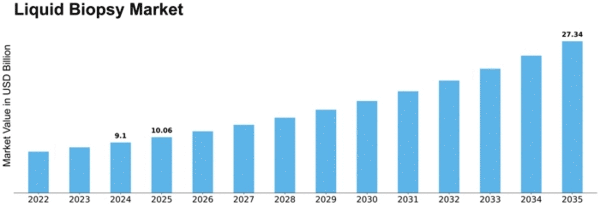

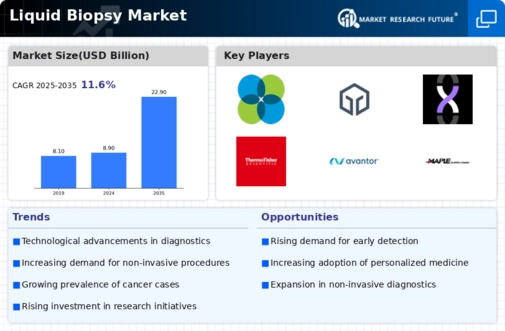
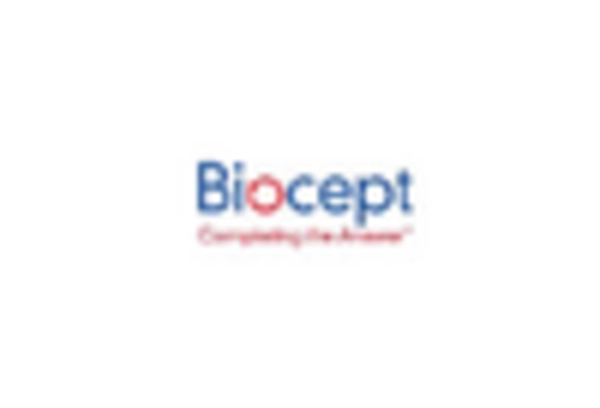



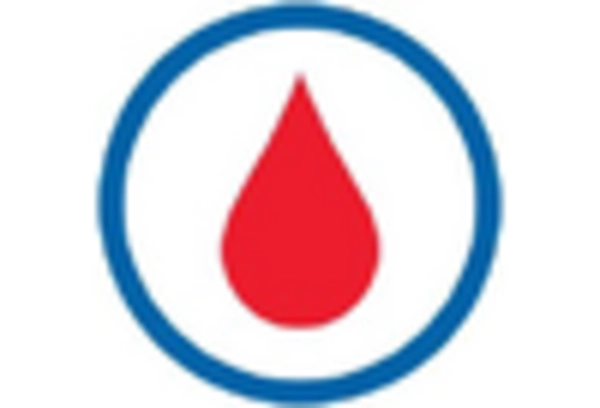
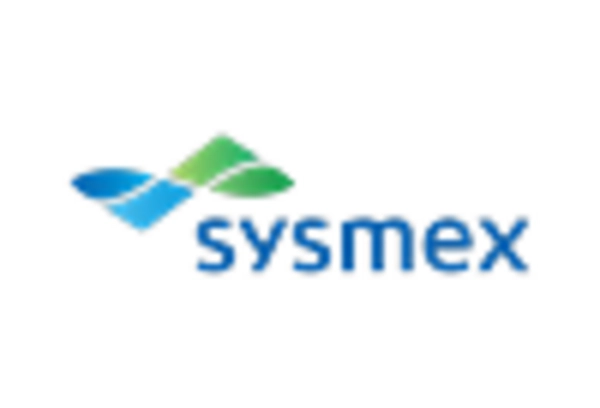









Leave a Comment